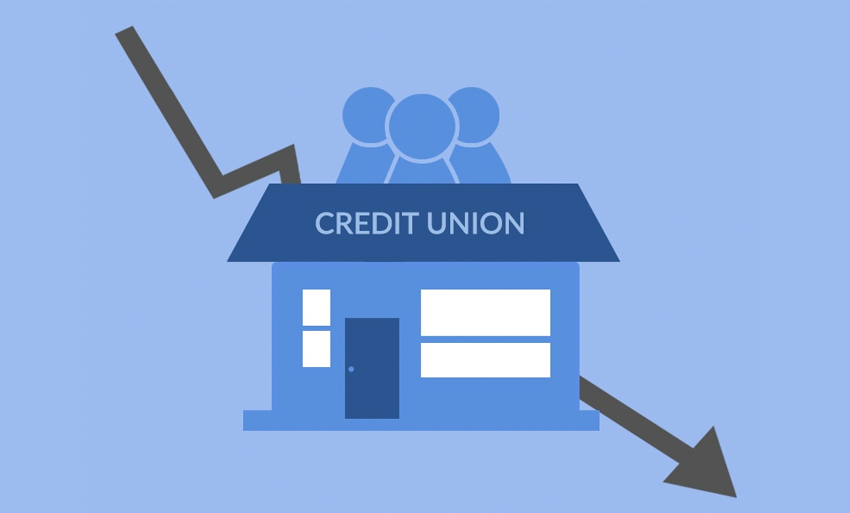The economic impact of credit unions on local consumer lending markets is significant. Credit union market presence influences bank loan and deposit rates, providing savings and benefits to both banks and their bank consumers.
Hannan (2002) estimated that a 1 percent change in credit union market share led to a 0.2 percent decline in bank money-market deposit rates, 0.1 percent decrease in interest checking rates and 0.3 percent decline in 3-month CD rates.
1. Jobs
Credit unions employ a variety of people, from customer service representatives to accountants. They also rely on volunteers and donated office space. These jobs are critical to Alaska’s economy, and it is unlikely that they would continue without the federal tax exemption.
Research supports that consumers benefit from the presence of credit unions in local financial services markets. The competition created by the federal tax exemption allows credit unions to offer lower deposit and loan rates than banks.
A simulated 50 percent reduction in credit union market share yields a 2.5 percent increase in unsecured non-credit card bank loan rates and a 5 percent increase in new vehicle loans. These estimates are conservative and can be extrapolated to other consumer bank loan products.

2. Taxes
While banks are owned by private shareholders, credit unions are nonprofit cooperatives that are owned by their members. This unique ownership structure helps to keep costs low for Alaska consumers.
The tax exemption also supports credit unions’ original mission of serving a common bond group of people of modest means. It’s not difficult to see how a business model that is less costly and provides better service than a bank can out-price one that pays taxes at the corporate level.
Previous research has documented clear consumer savings that result from the federal credit union tax exemption. For example, Hannan (2002) estimated the impact of credit union market share in local markets on bank/thrift deposit rates for money market accounts and interest checking. He found that a 50 percent reduction in the credit union share of the local deposit market would yield 12 basis point lower money market rates and 11 basis points lower interest checking rates.
3. Investments
As not-for-profit financial services cooperatives, credit unions return earnings to members in the form of lower loan rates and higher interest on deposits. This commitment to member service explains why so many Americans choose credit unions over banks.
Previous research has documented clear savings to both credit union and bank consumers due to the presence of credit unions in local financial markets. This analysis extends that work by simulating the effects of a 50 percent reduction in credit union market share on bank auto loan rates.
The results suggest that a significant percentage of auto loan interest saved by bank and credit union consumers in the state of Alaska is attributable to the federal tax exemption enjoyed by credit unions. Similar findings are demonstrated when examining the benefits to bank and credit union consumers on deposit products such as CDs, IRAs, KEOGH accounts, and savings, checking, and money-market accounts.

4. Food
Credit unions are a big part of the Alaska economy by providing consumers with lower prices. They also contribute to local economies by promoting and purchasing Alaska grown food.
During the Cash for Cans event, members of Alaska USA Federal Credit Union and their local credit unions contributed more than $73,000 to local food banks across the state. This was the second year of the fundraiser organized by the Alaska Credit Union League.
Alaska USA is changing its name to Global Credit Union, which will better reflect the organization’s growth into new markets. This includes a recent expansion into Arizona. The credit union says all existing card products, checks and credentials will remain in service following the April 3 name change. In addition to food drives, the organization helps support other food cooperatives like the Fairbanks Community Cooperative Market that operates as a grocery buying service and sells Alaska grown produce.
5. Community
Providing service to their members is a top priority for Alaska credit unions. In addition to philanthropy, they also support community organizations and events. Alaska USA Federal Credit Union recently donated money and time to an event at Mat-Su Career Tech High School that showcased its mascot Peri, the moose.
Previous literature demonstrates that consumer savings and gains result from the presence of credit unions in local consumer lending markets. Using conservative assumptions, this report estimates that, without the federal tax exemption, a 50 percent reduction in credit union market share would lead to an increase in unsecured bank loan rates by 2.5 percentage points and new and used vehicle rates by 5 percentage points.
These increases in interest rates are passed through to consumers who are not credit union members. A loss of the tax exemption would lead to direct losses to consumers of $15 billion annually.



